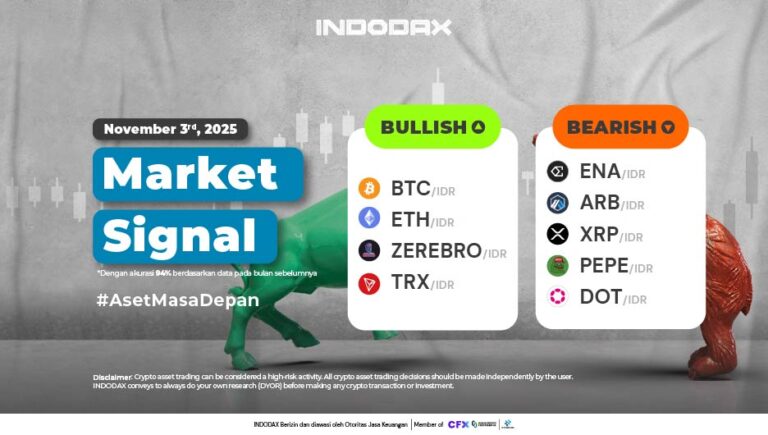Imagine being able to send crypto assets from one blockchain network to another without having to rely on complicated exchanges or third-party services. This is where the Blockchain Transmission Protocol (BTP) comes in.
This technology is here as an answer to the need for interoperability, a major challenge that has been faced by the blockchain ecosystem for a long time.
In this article, we will discuss in depth what BTP is, how it works, its various advantages, and its potential for the future of crypto and Web3.
What is Blockchain Transmission Protocol (BTP)?
Blockchain Transmission Protocol (BTP) is a cross-blockchain protocol that allows multiple networks, including those with different algorithms and consensuses, to connect without intermediaries such as crypto exchanges.
BTP enables cross-chain compatibility, facilitating the direct exchange of value, data, and services.
Developed by the ICON ecosystem, BTP is open and can be integrated with any blockchain that supports smart contracts.
Unlike traditional bridges, BTP uses a fully decentralized system with incentivized relayers and on-chain message verification, making it more secure and transparent.
BTP is ideal for direct token exchanges via smart contracts without the need for an exchange platform.
The technology also supports data exchange, such as ICONLOOP’s MyID service, which allows users to send data to other networks without having to re-upload their DID credentials.
In addition, BTP is used in the Broof service for blockchain-based digital certificate issuance. Although it only connects two blockchains directly, its network can be expanded to form a broad interoperability ecosystem.
With its flexible, secure, and scalable design, BTP is a modern interoperability solution that supports the growth of Web3.
Why Blockchain Interoperability Matters?
The blockchain world today is highly fragmented, with networks like Ethereum, BNB Chain, and Solana running separately with their own standards, languages, and protocols.
This fragmentation creates barriers for users and developers, as assets, data, and applications are difficult to move or integrate between networks.
For users, this means a fragmented experience and additional costs when switching platforms.
For developers, it limits the potential for innovation and complicates the development of cross-chain applications. Fragmentation also hinders the scalability of the crypto ecosystem as a whole.
This is where the Blockchain Transmission Protocol (BTP) comes into play. BTP offers secure and decentralized interoperability, allowing multiple blockchains to connect and communicate directly with each other.
This paves the way for a more efficient, inclusive, and integrated crypto ecosystem.
Another interesting article for you: What is a Blockchain Operating System? Definition, How It Works & Examples
How Blockchain Transmission Protocol Works
How Blockchain Transmission Protocol (BTP) works involves a data transmission mechanism between blockchains through a network of smart contracts and external relayer nodes run by the community.
Each blockchain connected to BTP must install three main components in the form of smart contracts.
The three are Message Broker to record BTP messages, Light Client or BTP Message Verifier (BMV) to verify messages from the relayer, and Service Handler which runs application logic based on the messages received.
Messages from one blockchain are sent by the relayer to the destination blockchain and are automatically verified by the smart contract without requiring trust in a third party (trustless).
All validation processes are on-chain and open to audit. Although BTP connects two blockchains directly, this network can grow into a multi-chain connection that is interconnected.
In fact, if there is a temporary disruption, data can be resent when the connection is restored, without losing information.
Advantages and Benefits of BTP

BTP (Blockchain Transmission Protocol) offers various advantages and benefits that can strengthen the blockchain ecosystem, including the following:
1. No Need for Centralized Exchanges or Bridges
BTP connects blockchains directly without relying on centralized exchanges or dedicated bridges. This eliminates the need for third parties, making transfers between blockchains more direct and efficient.
2. Supports Data Communication, Not Just Token Transfers
In addition to token transfers, BTP also supports data exchange between blockchains, enabling more complex interactions that are useful for applications in sectors such as DeFi and Web3.
3. Cost-Effective, Fast, and More Secure (Minimal Exploit Vulnerabilities)
With its decentralized design, BTP reduces costs and potential exploits on third-party platforms. Validation and applications run directly on each blockchain, increasing security and efficiency.
4. Scalability for Web3 and DeFi Applications Across Ecosystems
BTP is chain-agnostic and can be integrated with any blockchain that supports smart contracts.
This allows Web3 and DeFi applications to run interoperably, connecting more blockchains in a more scalable manner.
Comparison of BTP with Traditional Cross-Chain Bridge
Here is a comparison table between Blockchain Transmission Protocol (BTP) and traditional cross-chain bridge.
| Aspect | BTP | Traditional Bridge |
| Security | Trustless | Semi-trusted atau centralized |
| Interoperabilitas | Multichain-native | Usually limited to two directions |
| Transferable data | Tokens & information | Generally only tokens |
| Dependency | Independent | Relying on third party nodes/validators |
The explanation regarding the comparison of BTP with traditional cross-chain bridges from the table above is as follows:
1. Security
BTP adopts a trustless system, meaning that no third party needs to be trusted to verify transactions between blockchains.
The verification process is carried out decentralized through smart contracts, increasing the level of security.
On the other hand, Traditional Bridges often use semi-trusted or even centralized systems, which rely on certain operators or validators to ensure transactions between blockchains.
This can pose a security risk if the third party does not function properly.
2. Interoperability
BTP is designed to be multichain-native, meaning it can connect different blockchains without limitations.
BTP supports communication between multiple blockchains at once, opening up the potential for a broader and more connected ecosystem.
Traditional Bridges tend to be limited to two-way, meaning they only connect two specific blockchains.
This limits flexibility and scalability because users can only interact with blockchains that are already connected in the bridge network.
3. Transferable Data
BTP can not only transfer tokens, but also other information and data between blockchains, such as more complex application and service data. This expands the potential use of BTP in various scenarios.
In contrast, Traditional Bridges can generally only transfer tokens between connected blockchains, and are often limited to digital asset transactions without regard to additional data or information.
4. Dependency
BTP operates with a self-contained system, where there is no dependence on a third party or a specific validator node to communicate between blockchains.
Each blockchain only needs to integrate with ICON to communicate with other connected blockchains.
Traditional Bridges often rely on third-party nodes/validators to deliver and verify transactions.
This makes traditional bridges more vulnerable to disruption and operational failures if the third party in charge is not functioning properly.
Other Related Articles: Difference Between Layer 1 Blockchain, 2 Vs 3 & Their Advantages
Projects That Have Adopted or Supported BTP
BTP has gained attention from various blockchain projects that see the potential for interoperability offered by this protocol. Some projects that have adopted or supported BTP include:
1. ICON
As the developer of BTP, the ICON ecosystem fully supports and integrates this protocol to improve connectivity between blockchains.
2. Kusama
By integrating with BTP, Kusama opens up opportunities to improve interoperability with other connected blockchains.
3. NEAR Protocol
NEAR has plans to integrate BTP into its ecosystem, expanding cross-chain capabilities in the future.
The status of this ecosystem is still developing, but the strong roadmap suggests that BTP will expand and be adopted by more blockchains in the future.
Challenges and Future of BTP
While BTP has great potential to improve interoperability between blockchains, there are still several challenges that need to be overcome to ensure its widespread adoption and long-term success:
1. Wide adoption is needed to become an industry standard
For BTP to become a globally accepted interoperability solution, it will need to be widely adopted by blockchain projects across the ecosystem.
Without strong support from multiple platforms, BTP may struggle to achieve industry standard status.
2. Cross-chain compatibility could be an initial barrier
One of the main challenges facing BTP is the issue of compatibility between different blockchains.
Some blockchains may require customization or modification to connect with BTP, which could be an initial barrier to its adoption.
3. BTP’s potential to connect the world of Web3, GameFi, and on-chain AI applications
Despite these challenges, BTP has great potential to connect various sectors in the blockchain ecosystem, including Web3, GameFi, and on-chain AI applications.
With the ability to connect multiple blockchains, BTP can open up new opportunities for the development of more integrated and complex applications.
The future of BTP largely depends on how these challenges are addressed, as well as how the larger blockchain ecosystem adopts it and leverages the interoperability potential it offers.
Conclusion
That’s an interesting discussion about Blockchain Transmission Protocol (BTP) that you can learn more deeply only at the Crypto Academy. Not only does it increase your insight into investment, here you can also find the latest crypto news about the crypto world.
And for an easy and safe trading experience, download the best crypto application from INDODAX on the App Store or Google Play Store. You can also start buying Bitcoin, buying Ethereum, and other crypto assets practically in your grasp at INDODAX Market. Also follow INDODAX’s social media here: Instagram, X, Youtube & Telegram
In conclusion, Blockchain Transmission Protocol (BTP) is a sophisticated interoperability solution that has the potential to change the way blockchains communicate and interact.
With a design based on trustless principles and high flexibility, BTP is an important element in building a more decentralized and connected Web3 ecosystem.
Given the increasing need for cross-blockchain platforms, BTP has emerged as a very relevant innovation.
This is something that developers, investors, and crypto users should pay attention to in shaping the future of a more efficient and integrated digital ecosystem.
FAQ
1.What is Blockchain Transmission Protocol (BTP)?
BTP is a protocol that allows multiple blockchains to communicate and exchange data without a centralized intermediary or exchange.
2.How is BTP different from a regular bridge?
BTP is trustless and can transfer information across chains, not just tokens, unlike bridges which tend to be centralized and limited.
3.Can BTP only be used on the ICON network?
No. Although developed by ICON, BTP is designed to be compatible with multiple blockchains that support smart contracts.
4.What are the main benefits of BTP for crypto users?
Users can enjoy a hassle-free cross-chain experience, safer, faster, and free from high fees or intermediary risks.
5.Is BTP widely used?
Still in the development and adoption stage, but has been tested on several projects and has a promising development roadmap.
Author: BOY





 Polkadot 10.17%
Polkadot 10.17%
 BNB 0.81%
BNB 0.81%
 Solana 4.86%
Solana 4.86%
 Ethereum 2.37%
Ethereum 2.37%
 Cardano 1.63%
Cardano 1.63%
 Polygon Ecosystem Token 2.00%
Polygon Ecosystem Token 2.00%
 Tron 2.86%
Tron 2.86%
 Market
Market


